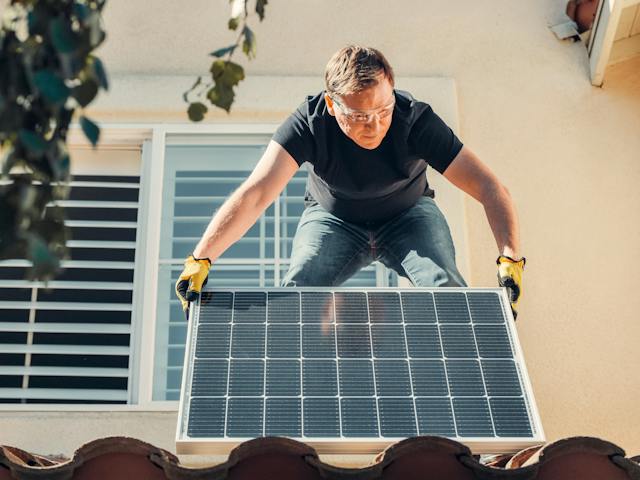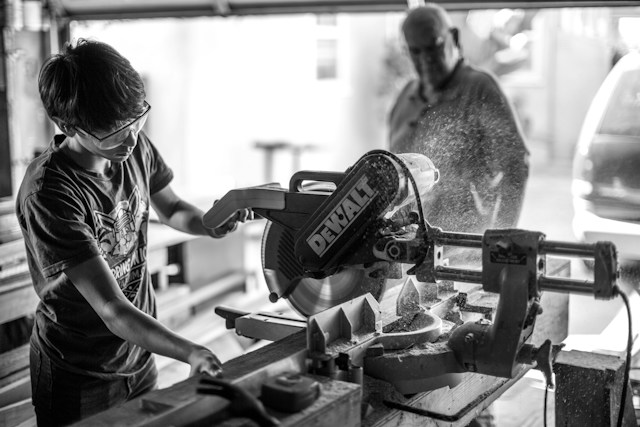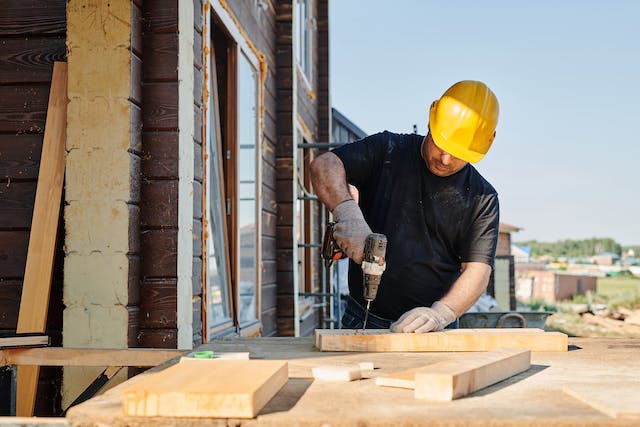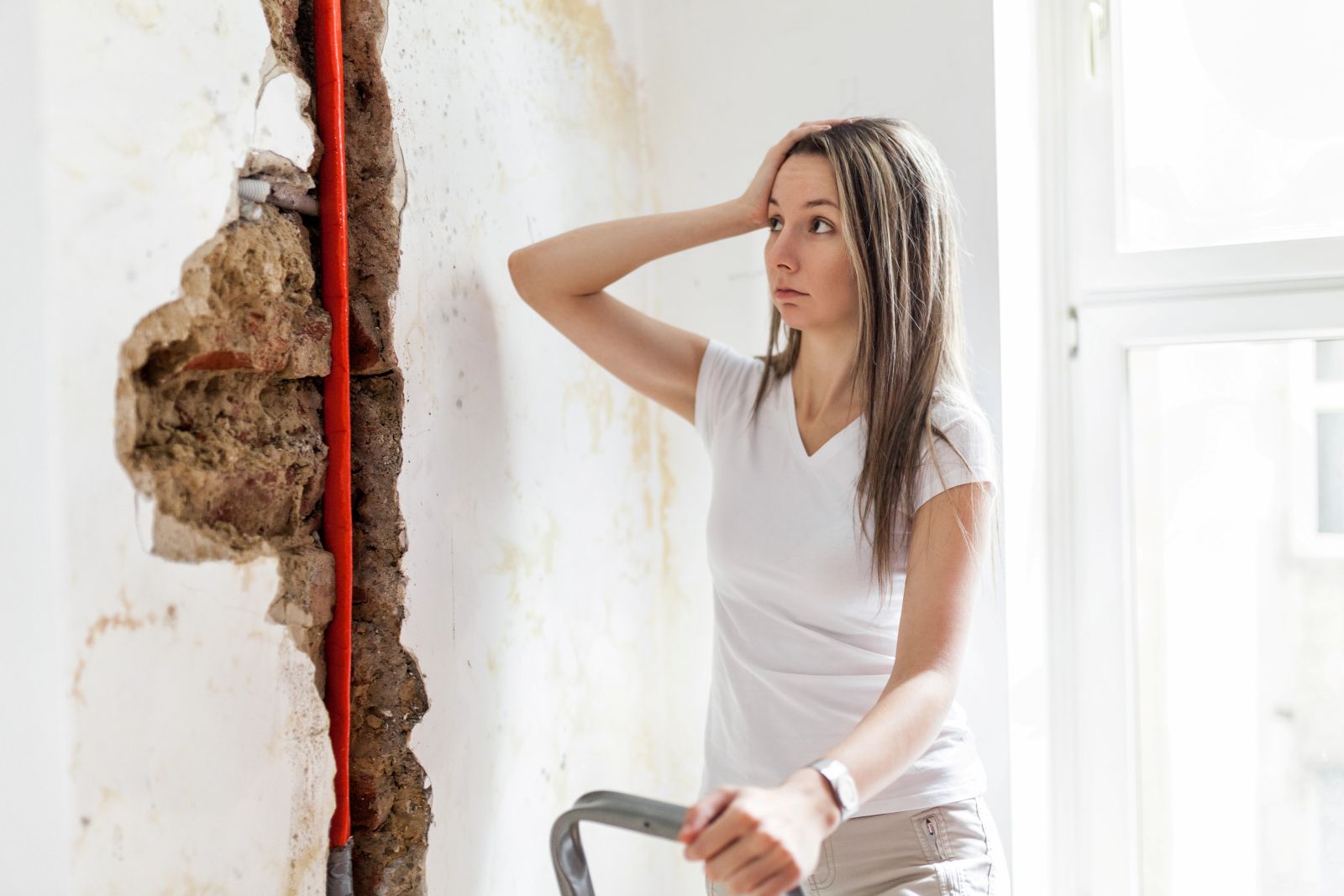Australia is experiencing a renovation boom, with homeowners increasingly investing in transforming their spaces. From modernising outdated interiors to incorporating sustainable designs, the home renovation landscape is evolving rapidly.
Current Trends in Home Renovation
Sustainable Living
Homeowners are making deliberate choices to incorporate eco-friendly materials and prioritise energy-efficient appliances, signalling a significant shift in the approach to building and renovating homes.
This conscious move towards sustainable building practices extends beyond the mere selection of materials and appliances. It encompasses a comprehensive approach that considers the environmental impact of every decision. This trend is not only reshaping the aesthetic appeal of homes but also contributing to a greener and more environmentally responsible future.
Recognising the importance of sustainability, tradies are actively integrating green solutions into their renovation projects. This involves a shift in construction practices, with an emphasis on minimising environmental impact and maximising energy efficiency.
1. Solar panels
One prominent aspect of sustainable home renovations in Australia is the installation of solar panels. This renewable energy source allows homeowners to generate their electricity, reducing reliance on traditional power grids and lowering the carbon footprint of the home.
2. Added Insulation
Beyond energy production, tradies are also incorporating energy-efficient windows and doors that enhance insulation and regulate indoor temperatures, contributing to overall energy efficiency.
3. Water conservation
Water conservation is another key focus in sustainable renovations, with the installation of water-saving fixtures. This includes low-flow faucets, dual-flush toilets, and other water-efficient technologies.
Homeowners are increasingly considering the long-term impact of their choices on the environment, and tradies are responding by integrating sustainable solutions into their skill set. This collaborative effort between homeowners and businesses not only enhances the energy efficiency of homes but also promotes a more sustainable and eco-conscious approach to living.

Open Concept Living
The growing popularity of open-concept living spaces reflects a contemporary preference for more fluid and interconnected interiors among homeowners. This trend often involves tearing down walls to create open and flowing spaces between the kitchen, dining, and living areas.
This offers benefits like increased natural light, improved social interaction, and a sense of spaciousness. However, this design choice poses significant challenges for builders, primarily in terms of maintaining structural integrity.
One of the central concerns when implementing open-concept designs is ensuring that the removal of walls does not compromise the structural stability of the building. Walls often serve as integral components for supporting upper levels, and their removal requires serious assessment of load-bearing elements. Builders must carefully consider the redistribution of weight to prevent potential structural issues.
To address this challenge, builders often conduct a thorough structural assessment of the property, determining which walls are load-bearing and how their removal might impact the overall structure. Collaboration with professionals such as structural engineers and architects is crucial to developing a safe and effective plan for creating an open layout.
Modernising Heritage Homes
A growing number of Australia homeowners are embarking on projects to modernise heritage homes. They are looking for a delicate balance between incorporating contemporary amenities and preserving the historical charm these structures are known for.
The modernisation of heritage homes involves a thoughtful integration of modern conveniences into older architectures, the use of sympathetic materials, and collaborative efforts between builders and heritage conservation experts.
One key aspect of modernising heritage homes is the integration of trending amenities that align with the lifestyle and comfort expectations of today’s homeowners. This can include updating plumbing, electrical systems, and incorporating energy-efficient solutions while respecting the historical integrity of the building.
Careful consideration is given to effortlessly blend technologies such as smart home systems, heating, and cooling solutions without compromising the aesthetic and historical significance of the property.
When aiming to maintain the visual continuity and authenticity of heritage homes the materials used require careful consideration. When undertaking renovations, builders often opt for materials that mirror the original construction, preserving the architectural identity.
Collaboration between builders and heritage conservation experts is crucial for the success of these projects. Heritage conservation experts bring a deep understanding of historical architecture, ensuring that renovations are in line with preservation principles.
Smart Home Technology
The surge in smart home technology is reshaping the landscape of home renovations, offering homeowners increased convenience, energy efficiency, and security. The incorporation of smart thermostats, lighting systems, and security features has become a common trend.
This transformation often involves electricians who play a crucial role in ensuring the smooth integration of these technologies while maintaining user-friendly interfaces.
Smart Thermostats:
Smart thermostats are designed to optimise heating and cooling systems, providing homeowners with greater control over their indoor climate. Electricians install these devices, ensuring compatibility with existing HVAC (Heating, Ventilation, and Air Conditioning) systems.
Challenges in this integration may include adapting wiring to support the new thermostat, connecting it to Wi-Fi networks, and ensuring synchronisation with other smart devices in the home. Electricians must also educate homeowners on the use of the smart thermostat and its associated mobile applications.
Lighting Systems:
Smart lighting systems offer customizable lighting scenarios, energy efficiency, and remote control capabilities. Electricians install smart bulbs, switches, or integrated lighting systems, requiring expertise in both electrical wiring and technology integration.
Challenges include retrofitting existing lighting fixtures, establishing connectivity between devices, and programming lighting scenes for user preferences. The integration of voice-activated controls and compatibility with virtual assistants further adds complexity to the installation process.
Security Features:
Smart home security features encompass surveillance cameras, doorbell cameras, smart locks, and motion sensors. Electricians are involved in the installation and wiring of these devices, ensuring they function well with the home’s electrical system.
Challenges include routing wires discreetly, ensuring power sources for cameras and sensors, and integrating security systems with central monitoring or mobile apps. Electricians may need to coordinate with other contractors, such as locksmiths or security system specialists, to achieve comprehensive security solutions.

Renovation Challenges
Supply Chain Disruptions
The global supply chain disruptions have created substantial challenges for builders and contractors in Australia, impacting the availability and pricing of construction materials. These disruptions have led to delays and budgetary concerns within the construction industry. In response, builders are implementing various strategies to navigate these challenges.
Alternative materials:
Builders are actively exploring alternative materials that are either readily available or can be sourced locally. This approach involves considering different types of timber, alternative finishes, or innovative construction methods that reduce reliance on scarce or expensive materials. By increasing variety in material options, builders aim to maintain project timelines and budgets despite disruptions in the traditional supply chains.
Strategic Planning:
Contractors are adopting meticulous planning to anticipate and mitigate potential delays caused by supply chain issues. This involves early procurement of materials to secure necessary resources, clear communication with suppliers to stay informed about potential challenges, and flexible project scheduling to account for possible disruptions. By incorporating strategic planning into their operations, contractors aim to minimise the impact of supply chain disruptions on project timelines.
Communication with Clients:
Transparent communication with clients is a key aspect of managing expectations during supply chain disruptions. Builders are proactively communicating potential delays and price fluctuations due to supply chain challenges. By keeping clients informed, builders establish a collaborative relationship, fostering understanding and flexibility. Clear communication helps clients navigate uncertainties, make informed decisions, and maintain realistic expectations regarding project timelines and costs.
Regulatory Compliance
The increasing focus on sustainability has led to a growing set of regulations that builders and plumbers and electricians must navigate when undertaking home renovation projects. These regulations aim to promote energy efficiency, water conservation, and waste reduction, reflecting a broader commitment to environmental responsibility.
Energy Efficiency:
Regulations pertaining to energy efficiency in home renovations often involve adherence to specific standards and guidelines. Builders are now required to incorporate energy-efficient design elements and materials into their projects.
A few examples of these design elements are:
- Insulation Standards: Regulations may specify minimum requirements for insulation in walls, ceilings, and floors to enhance thermal performance and reduce energy consumption.
- Energy-Efficient Appliances: Builders must install appliances that meet or exceed energy efficiency standards, such as ENERGY STAR-rated products, to minimise electricity consumption.
- Window Efficiency: Standards for windows may focus on factors like insulation, glazing, and frame materials to enhance energy conservation within the home.
Water Conservation:
Water conservation regulations in home renovations aim to reduce water consumption through the use of efficient fixtures and systems.
Compliance requirements often include:
- Low-Flow Fixtures: Builders are mandated to install low-flow faucets, showerheads, and other water fixtures to limit water usage without compromising functionality.
- Dual-Flush Toilets: Regulations may require the installation of dual-flush toilets, allowing users to choose between low and high-volume flushes, contributing to water conservation.
- Rainwater Harvesting: In some cases, compliance may involve incorporating rainwater harvesting systems to collect and reuse rainwater for non-potable purposes, reducing reliance on municipal water sources.
Waste Reduction:
Waste reduction regulations focus on minimising construction and demolition waste, encouraging sustainable practices in home renovation projects.
Compliance measures may include:
- Recycling Construction Waste: Builders are required to implement strategies for sorting and recycling construction waste materials, diverting them from landfills.
- The use of Sustainable Materials: Compliance may involve using recycled or sustainably sourced materials to reduce the environmental impact of the renovation.
- Construction Waste Management Plans: Builders may need to develop and implement waste management plans detailing how they intend to reduce, reuse, and recycle materials throughout the renovation process.
Skill Shortages
The increase in demand for renovations has uncovered significant skill shortages in specific trades within the construction industry. Recognising this challenge, concerted efforts are underway to address the dearth of skilled workers.
Builders and trade organisations are actively investing in apprenticeship programs, providing aspiring individuals with hands-on experience and mentorship under seasoned professionals. These structured initiatives serve as a crucial bridge, cultivating the next generation of skilled workers and ensuring a sustainable workforce for the future.
Working alongside the apprenticeship programs, there is a heightened focus on upskilling initiatives for existing workers. Construction companies are implementing training programs and workshops to enhance the proficiency of their workforce in areas where skill shortages are most pronounced.
This commitment to continuous development not only addresses immediate workforce gaps but also fosters adaptability in the face of evolving industry demands. The industry is shifting towards a culture of lifelong learning, acknowledging that ongoing education and training are essential.

Adapting to the Demand
In order to meet the increasing demand for renovations, tradies are strategically adapting through technology integration, utilising virtual reality for design, project management apps, and online platforms for client engagement.
Collaboration and networking within the industry has also become more important, as tradies form alliances to offer more comprehensive services, fostering an integrated approach to home renovations.
In the competitive market, trades businesses are also adjusting marketing strategies, emphasising online presence, customer reviews, and word-of-mouth referrals to stand out and attract clients for renovation projects.
Opportunities and Challenges
As homeowners actively invest in upgrading their properties, the ability of tradies to stay informed about emerging trends becomes a key part in the success of business. The demand for sustainable building materials, energy-efficient solutions, and eco-friendly practices, offers tradies a chance to contribute to a more sustainable construction industry.
However, this boom also comes with its set of challenges, such as supply chain disruptions, regulatory changes, and skill shortages. Navigating these challenges requires a proactive approach, involving strategic planning, continuous learning, and collaboration within the industry.
By staying adaptable and responsive to the evolving needs of homeowners, tradies have the opportunity to not just navigate the current boom but to actively contribute to a sustainable and thriving future for home renovations in Australia.
ALSO READ: Melbourne Tradies: Unlock Best Smile With Affordable Teeth Straighteners


